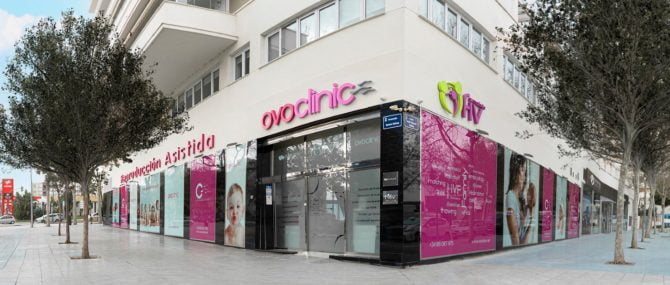- 1.
- 2.
- 3.
- 3.1.
- 3.2.
- 3.3.
- 3.4.
- 3.5.
- 3.6.
- 3.7.
- 3.8.
- 4.
- 5.
- 5.1.
- 5.2.
- 6.
- 7.
- 7.1.
- 7.2.
- 7.3.
- 7.4.
- 8.
- 9.
- 10.
- 10.1.
- 11.
- 12.
Description
Ovoclinic Marbella, formerly known as FIV Marbella, is a private fertility clinic located in the center of Marbella, Spain, with a total of 1,054m2.
Its founder and director is embryologist Enrique Criado Scholz, its medical director is Dr. Daniel Sosa and in total, they form a team of 89 professionals among doctors, laboratory staff, nurses, coordinators, etc.
Ovoclinic Marbella has the capacity to perform about 1,200 cycles of assisted reproduction per year and 50% of its patients are foreigners. For this reason, the clinic has an international department and is able to attend patients in English, French, Italian, Portuguese, and Arabic.
If you need information on how to get to the Ovoclinic Marbella clinic, either by public or private transport, you can access this link.
History
Ovoclinic Marbella was inaugurated in 2012 and currently has four centers in different Spanish cities and one in Italy: Marbella, Malaga, Barcelona, Madrid and Milan. Another center will also be opened in Ceuta soon.
On the other hand, ovoclinic Marbella created the first donor egg bank in Europe, called Ovobank, so they are specialized in fertility treatments with gamete donors such as egg donation.
In terms of awards which Ovoclinic Marbella received during the last years, the following are the most important ones:
- Andalusia Excellence Award 2018, medical category
- National Medicine Award 2018, assisted reproduction category
- National Medicine Award 2019, assisted reproduction category
- A Tu Salud 2019 Award, reproductive medicine and fertility category
Facilities
Ovoclinic Marbella was renovated in 2018, so all its facilities are very new and modern, adapted to all the needs that fertility patients may have.
In the following section, you’ll find a list of all the areas of the clinic, with the resources and technology available to carry out fertility treatments.
Building and facade
Ovoclinic Marbella occupies the first floor of an 8-story corner building located very close to the sea.
The entire façade is designed with large windows through which natural light enters the consultation and waiting room areas, although they have curtains covering them at all times for greater privacy.
The entrance door is also made of glass and opens automatically, thus adapted for people with reduced mobility.
Generally speaking, this is a very busy area, although you can easily park in an esplanade right on the side of the clinic.
Reception and waiting rooms
The reception of Ovoclinic Marbella is at the entrance and has two white counters in a modern style, one on the right and one on the left.
A total of 5 people work here and attend in different languages: Spanish, English, French and Italian.
Following the reception, there are 5 individual waiting rooms: four are small and one larger is the family room.
Each has a Nespresso coffee or tea machine, as well as magazines and newspapers for entertainment. One of the waiting rooms also has a television.
Apart from this, Ovoclinic Marbella has a specific waiting room for gamete donors. This one is bigger than the previous ones, as it is common, and has two sofas, six chairs, a table with magazines and a water dispenser.
Consultation rooms
The consultation area is located on the left side of the clinic, following the long corridor past the reception.
Ovoclinic Marbella has 5 medical consultations and 3 of them are with an examination room. It is located in a separate room inside the practice and is equipped with a gynecological table, the GE Healthcare ultrasound machine, and a hand washbasin.
A total of 4 gynecologists work at Ovoclinic Marbella who speak Spanish, English, French and Italian. The Italian-speaking gynecologist is a native.
All of them are on duty on weekends and holidays, both to perform the follicular puncture or embryo transfer when it is more convenient, and to perform ultrasound controls during the stimulation.
Operating Room
The IVF surgery room in Ovoclinic Marbella is 24.522 and is directly communicated with the IVF laboratory.
Before entering, there is the surgical area, which is a corridor where there are a sink and different access doors to other rooms, such as the laboratory or the recovery room. All these doors are automatic.
The operating room is large and fully equipped with everything needed to perform follicular puncture procedures, embryo transfer and major outpatient surgery: operating table, instrument tables, a monitor, an ultrasound machine, anesthesia administration system, defibrillator and crash cart.
In addition, this operating room has all the necessary measures to ensure maximum sterility conditions, such as the epoxy paper on the walls, and rounded corners and floor bases to prevent dirt from accumulating.
The staff that is present at the interventions are the gynecologist, the anesthesiologist, the nurse, the assistant, and the embryologist if necessary.
Laboratories
Ovoclinic Marbella has 3 physically separate laboratories: andrology, embryology, and a scientific laboratory. The latter two are divided by a glass wall and communicate through a window.
A total of 5 embryologists and 2 laboratory technicians work here, who are on duty on weekends.
Below, we will discuss each of them:
Andrology Laboratory
This laboratory has the necessary equipment and material to process the seminal samples: two laminar flow hoods, two-phase contrast microscopes, a working incubator, a centrifuge and a computer.
The procedures that are performed are the following:
- Semen Analysis
- Sperm capacitation for artificial insemination
- Sperm selection with MACS
- Fragmentation test with Fertile® chip
- Sperm selection with hyaluronic acid (SpermSlow™ PICSI)
- Sperm freezing
This laboratory is also adapted to treat infectious sperm samples. However, all HIV-positive patients in Andalusia are referred to the Virgen de las Nieves Hospital in Granada for fertility treatment.
IVF Laboratory
The doors of the IVF laboratory are automatic and access is restricted from the surgical site.
Here we find all the technology and materials necessary for the correct handling of biological samples: two laminar flow hoods with heated surfaces, four binocular magnifiers, two inverted microscopes, heated blocks, a microinjector with an anti-vibration table, a time-lapse incubator (Miri-TL), and five individual incubators (Planer). The latter is low in oxygen and is used for long blastocyst cultures.
An interesting fact is that the whole laboratory is glassed, so patients can see from the clinic corridor how the embryologists work.
Another piece of equipment present in the IVF laboratory at Ovoclinic Marbella is a laser with which embryo biopsies or assisted hatching are performed.
There are also 6 oocyte and embryo cryopreservation banks, which are frozen using the vitrification method.
The walls of the laboratory, like those of the operating room, are covered with epoxy paper to facilitate cleaning, there are no right angles on the walls or floor so that dirt does not accumulate and the ventilation system has positive pressure. All this is indispensable to guarantee the maximum conditions of sterility.
Finally, the computerized security and traceability systems for biological samples used at Ovoclinic Marbella are the VRepro and the Ovotracker.
Scientific laboratory
It is right next to the IVF laboratory and equipped with the following equipment: a laminar flow hood with two binocular magnifiers, a microinjector with anti-vibration table, two Planer incubators and two cryopreservation benches.
Procedures with eggs and embryos are performed here for research purposes.
Recovery room
Ovoclinic Marbella has a large recovery room with 5 articulated beds separated by panels and a computer table where the nurse is located.
This room is located within the surgical area, that is, in the clean area next to the operating room and the IVF laboratory.
Inside the room, there is a common toilet with individual lockers for patients to leave their things. However, as this is a sterile area, there is no additional seat for the accompanying person.
Ovoclinic Marbella offers its patients the service of breakfast or lunch after each intervention.
Sperm collection rooms
FOvoclinic Marbella has two rooms for obtaining semen samples.
Each is equipped with the following amenities: armchair, sink, paper dispenser, television, magazines and adjustable lighting.
These rooms also have a button so that the patient can call in once he or she is finished and the staff comes to collect the sample.
Nursing room
Ovoclinic Marbella has a small room to do the blood draws for the patients.
The resources found here are a stretcher with armrests, a sink, a refrigerator, a storage area and a table.
Once the blood samples are obtained, Ovoclinic Marbella sends them to an external laboratory for analysis.
First visit
Ovoclinic Marbella offers all its patients a free first visit that lasts approximately one hour.
This first visit is informative and is carried out by several professionals: the patient care staff, the gynecologist and the assigned coordinator.
- The gynecologist checks if there are previous reports or analyses provided by the patients, gives an orientation and indicates what the next steps would be.
- The coordinator then shows all the facilities to the patients by giving them a tour of the clinic and, if necessary, gives a quote for the treatment.
- The patient care staff provides all necessary documentation and gives the next appointments.
It should be noted that each patient at Ovoclinic Marbella is assigned a coordinator who accompanies them to each appointment. If they have any questions, patients can contact their coordinator who will help them through the process. In addition, patient care at Ovoclinic Marbella is 24 hours.
IVF Marbella has 10 patient care coordinators who speak the following languages: Spanish, English, French, Italian, German and Dutch.
Foreign patients have the possibility to make the first visit by Skype or telephone.
On the other hand, Ovoclinic Marbella also has the option of a first gynecological visit. This costs 120 euros and includes a semen analysis and ultrasound.
What treatments do they perform?
The treatments that can be carried out at Ovoclinic Marbella are specified below:
If you're still unsure which fertility treatment is right for you and would like to know more about it, we suggest you read on here: Fertility Treatment Overview.
The treatment costs may vary significantly depending on the tests or techniques included or not, such as the seminogram, medication, fertility testing, medical visits, prolonged culture or embryo vitrification.
This Tool helps you to find out the exact costs of the different fertility clinics (what's included and what's not) and provides you with lots of useful tips for your first appointment.
Complementary techniques
In addition to all the treatments indicated in the previous section, Ovoclinic Marbella also offers its patients other complementary techniques.
The blastocyst culture, for example, has the advantage of better selecting the embryos with the greatest potential for implantation and thus increasing the probability of pregnancy. It is especially indicated for couples with implantation failures or miscarriages.
Additionally, Ovoclinic Marbella has an incubator with Time-Lapse technology, so that all the embryonic growth is recorded in a video that the embryologist can evaluate later to choose the best embryo. This video is given to the patients to keep as a souvenir.
Men suffering from azoospermia, on the other hand, can undergo sperm recovery techniques such as testicular biopsy or epididymis aspiration.
Other complementary techniques performed at Ovoclinic Marbella are Assisted Hatching, Sperm DNA Fragmentation, Genetic Compatibility Test, etc.
Egg and sperm donors
By having the Ovobank egg bank, Ovoclinic Marbella serves many women who want to become egg donors.
They come to the same clinic to perform the process of ovarian stimulation and follicular puncture but are called at different times from the patients. For this purpose, there is a temporary separation between donors and recipients.
Egg donors are also assigned a coordinator and 24-hour telephone attention in case they have questions about medication or any problems.
Only 30% of the women who are candidates for egg donors end up donating as Ovoclinic Marbella follows very strict criteria for selecting donors.
On the other hand, Ovobank has developed a very interesting tool for patients who undergo egg donation. This tool is Ovomatch, a mathematical algorithm that allows facial recognition to assign donors with high similarity to the recipient in a totally objective way. To do this, the receiver has to enter her physical data in the application and make a 'selfie'.
It should be noted that Ovomatch guarantees the anonymity of the egg donors at all times, as established by Law 14/2006 on Assisted Human Reproduction Techniques.
As for sperm donors, they also have the possibility of donating at Ovoclinic Marbella, where they pass all the necessary medical and psychological tests.
Other services
Ovoclinic Marbella patients also have at their disposal other medical specialties that can be of great help in order to achieve success in fertility treatments. They are listed below:
- Psychological support
- Ovoclinic Marbella has a psychologist on staff who helps her patients to keep a healthy and positive mentality towards the treatment.
- Acupuncture service
- these sessions of traditional Chinese medicine are offered before and after the embryo transfer.
- Nutritionist
- nutrition and maintaining an adequate BMI are indispensable factors in achieving a pregnancy.
In addition, Ovoclinic Marbella has a medical committee to deal with cases of high complexity such as recurrent miscarriages, endometriosis, cancer patients, etc.
Success rates
The Spanish Fertility Society is in charge of compiling the results of all the Spanish assisted reproduction clinics every year and making a statistical analysis. In fact, the SEF is the only scientific and independent organization of the clinics that collects and publishes these data in an objective manner.
Although our analysis of this clinic was carried out in 16th November, 2022, we have to indicate that the last report published by the SEF shows the success rates obtained in the year 2020 (National Activity Register 2020-SEF Register).
IVF/ICSI
Realized cycles
Number of total cycles performed by the clinic in a year.
Implantation rate per transfer
The probability that an embryo will implant in the woman's uterus after the transfer.
Pregnancy probability per transfer
Probability that an embryo transfer will lead to a pregnancy, regardless of the number of embryos transferred.
Fresh embryo transfer
Frozen embryo transfer
Percentage of transferred embryos
Percentage of embryo transfers made with one, two or three embryos
Fresh embryo transfer
Frozen embryo transfer
Type of pregnancy per transfer
Types of pregnancies achieved according to the number of embryos transferred
Transfer of fresh embryos
Transfer of frozen embryos
IVF with egg donation
Realized cycles
Number of total cycles performed by the clinic in a year.
Implantation rate per transfer
The probability that an embryo will implant in the woman's uterus after the transfer.
Pregnancy probability per transfer
Probability that an embryo transfer will lead to a pregnancy, regardless of the number of embryos transferred.
Transfer of frozen embryos
Percentage of transferred embryos
Percentage of embryo transfers made with one, two or three embryos
Transfer of frozen embryos
Type of pregnancy per transfer
Types of pregnancies achieved according to the number of embryos transferred
Transfer of frozen embryos
Artificial insemination with partner's sperm
Pregnancy rate per cycle
Number of pregnancies per cycle according to the woman's age.
Type of gestation by pregnancy
Type of pregnancy obtained after performing an artificial insemination treatment
Women under 35 years
Artificial insemination with donor sperm
Pregnancy rate per cycle
Number of pregnancies per cycle according to the woman's age.
Type of gestation by pregnancy
Type of pregnancy obtained after performing an artificial insemination treatment
Women under 35 years
Women between 35-39 years
User experiences
In general, Ovoclinic Marbella has good opinions on the Internet from its patients. In Google Business reviews everyone agrees that they have received excellent treatment from their professionals, with kindness and professionalism.
Some patients have also indicated that they cannot contact the doctor when something has come up.
However, as we have already indicated, Ovoclinic Marbella has a 24-hour telephone service with patient care personnel, who are responsible for handling any queries and acting as a link between the patient and the doctor.
You can also read more opinions and experiences at Ovoclinic Marbella in our comments section.
Medical team
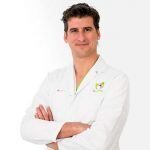




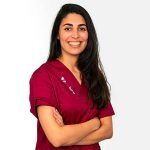


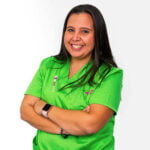
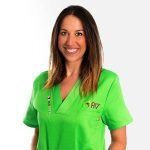

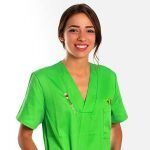
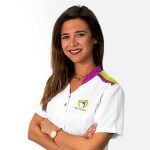
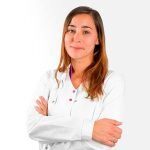





Location of the clinic
Ovoclinic Marbella is located on Avenida Severo Ochoa N/67, just opposite the Marina La Bajadilla marina.
This is the central area of Marbella, so patients have several restaurants, supermarkets and shops nearby, in addition to the promenade and the beach.
Avenida Severo Ochoa, 67, 29603 Marbella, Málaga, Andalusia, Spain
How to get there?
Patients arriving at Ovoclinic Marbella from Malaga can take the A-357 and A-355. You can also take the AP-7 to exit 186, although you have to pay toll fees. The distance from Malaga is about 62 kilometers and, if you come from the airport, about 52 kilometers.
Although it can be a bit complicated in high season, it is possible to find parking in the nearby streets or in an esplanade right next to Ovoclinic Marbella. Parking is free of charge. There is also the Calle Juan de la Cierva parking lot about 200 meters away if necessary.
As far as public transport is concerned, the bus lines with stops near Ovoclinic Marbella are the L-60 (Fuengirola - Marbella (Direct)), the L-76 (Hospital Costa Del Sol - Marbella - Nueva Andalucía), the L-78 (Hospital Costa Del Sol - Marbella - San Pedro) and the M-220 (Fuengirola - Marbella).
Furthermore, in the case of international patients or those who require it, Ovoclinic Marbella has a transportation service that will pick them up at the airport. If requested, the clinic's international department will also help you with accommodation in the center of Marbella or with booking flights.
Conclusion
Ovoclinic Marbella is a good clinic to carry out any fertility treatment, as they have all the technology and personnel necessary to do so.
Its facilities are very comfortable and innovative, from individual waiting rooms to laboratories with glass walls. The staff at Ovoclinic Marbella takes care of every last detail so that patients do not feel alone on this hard road to motherhood.
In addition, Ovoclinic Marbella has a lot of experience in egg donation cycles, as they have their own egg bank and very useful tools to optimize the whole process, as is the case of the Ovomatch application we have mentioned.
If you have any doubts when choosing a fertility clinic, we can give you more recommendations and advice such as those found in the article Things to Consider to Choose the Right Fertility Clinic for You.
Healthcare Operating Authorization
Health Center approved by the Spanish Ministry of Health - License number (CNN): 0129005606
